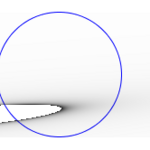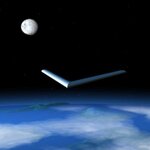Space

This will be my informal introduction to sim-transit-lc, an open source toolset I've been working on. The toolset is meant to be a general purpose light curve analysis and optimization system, but today we'll only be looking at one built-in transit type: ringed planets.
The D792 dip of Boyajian's star (or KIC 8462852) is one of the most peculiar ever recorded. It's not only considerably deeper than most exoplanetary dips, but it also doesn't have the usual V or U shape; plus it's asymmetric.
Ballesteros et al. (2017) came up with a clever idea to try to explain its asymmetry, by means of a…
Have you wondered why we can't see the Apollo landing sites from Earth? Moon is so far away that even the ISS at around 108 meters in length would span just over one pixel if Hubble were to photograph it on the Moon at its highest resolution. From NASA:
Can Hubble see the Apollo landing sites on the Moon?
No, Hubble cannot take photos of the Apollo landing sites.
“An object on the Moon 4 meters (4.37 yards) across, viewed from HST, would be about 0.002 arcsec in size. The highest resolution instrument currently on HST is the Advanced Camera for Surveys at 0.03 arcsec. So anything we left on…

A cold beer on a hot day or a whisky nightcap beside a coal fire. A well earned glass can loosen your thinking until you feel able to pierce the mysteries of life, death, love and identity. In moments like these, alcohol and the cosmic can seem intimately entwined.
So perhaps it should come as no surprise that the universe is awash with alcohol. In the gas that occupies the space between the stars, the hard stuff is almost all-pervasive. What is it doing there? Is it time to send out some big rockets to start collecting it?
The chemical elements around us reflect the history of the universe…

At a distance of a mind-blowing 750 million light years from Earth, astronomers using the Very Long Baseline Array (VLBA), a system made up of 10 radio telescopes across the U.S., say they've been able to observe and measure the orbital motion between two supermassive black holes.
They did it by observing several frequencies of radio signals emitted by these supermassive black holes. Over time, they have essentially been able to plot their trajectory and confirm them as a visual binary system. In other words, they claim they've observed these black holes in orbit with one another, though it's…

Rather than providing another functional construct to fit observational cosmology, a mechanistic standard model approach seems to predict the same regarding both dark energy and inflation. The open access Journal of Cosmology recently published this theory and so a very brief attempt to review the physics is presented here for your intellectual enjoyment (see http://journalofcosmology.com/JOC26/Hayes.pdf).
Dark EnergyBasically, the concept is that the Pauli exclusion principle applies equally to arbitrarily long wavelength fermions, even those whose wavelength scales with the Hubble length.…

A day or two ago I came across this article
Incredible image of the giant ‘cannibal’ Betelgeuse star | Daily Mail Online
which contained this wonderful picture, the highest resolution image of Betelgeuse obtained so far:
Now this article was found in one of our national newspapers, one much loathed by liberals (in the American sense of the word). Regardless of political leanings, as always with any science article in the popular press, I looked to the original source. This was European Southern Observatory (About ESO | ESO United Kingdom), with its very high resolution…

Anonymous now has more credibility than all four big US cable
news channels and the big newspapers combined.
This is due to the fact that while they and their sources are …anonymous..
they manage to find verifiable information.
This claim is different. IF this
is true there are only TWO ways NASA could have found proof of extraterrestrial
life. SETI has intercepted a convincingly
strong source of intelligently engineered radio from a known habitable zone Kepler
planet. Alternatively, and more probably
the space probe which has detected signs of an ocean of…
In the evening of May 30 a giant fireball lit up the skies south of Venice, Italy. The object, which was traveling very slowly along a south-north trajectory, was captured by three video stations in the area, plus observed by countless bystanders and recorded in pictures. The video data allowed to precisely measure the trajectory, which made it clear that the rock was headed straight toward the Venice metropolitan area, and that it would have landed there if it had not disintegrated in flight.
During its atmospheric incursion the body withstood many explosions, and it is doubtful that falls…

JP Aerospace is an interesting company - in the city of Rancho Cordova, CA., California, JP Aerospace, America's OTHER Space Program. Their aim is to develop ways to send airships up into the stratosphere - and more controversially, all the way to orbit with their "Orbital Airships" vision. The airships would accelerate very slowly, at a rate of perhaps a few centimeters per second increase in speed every second, over several days, until they reach orbital velocity. Can they, or can't they, or how far can they go?
If you do it the other way, build airships to re-enter Earth's atmosphere…

JP Aerospace is an interesting company - in Sacramento, California, JP Aerospace, America's OTHER Space Program. Their aim is to develop ways to send airships up into the stratosphere - and more controversially, all the way to orbit with their "Orbital Airships" vision. The airships would accelerate very slowly, at a rate of perhaps a few centimeters per second increase n speed every second, over several days, until they reach orbital velocity.
I will start by explaining the origins of the company - and some of the things we know are possible. For instance if you do it the other way,…